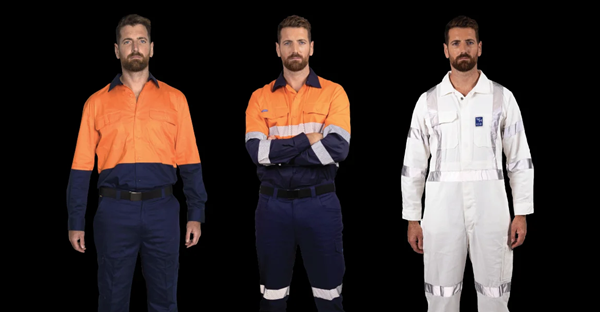Introducing Pink Personal Protective Clothing
Who would have thought over 90 years ago the first high-vis garment was born, unsurprisingly because of an industrial accident that inventor Bob...
Chemicals do not differentiate. From the tops of our heads to the soles of our feet, every single millimetre of us can be damaged beyond repair if we are not properly protected against harmful chemicals and substances. In the past few years, there have been several high-profile accidents across Australia that have drawn attention to this issue. People have been seriously injured, and there have been fatalities.
Tragically, as some accidents have shown, workers have been injured because they didn’t have access to suitable PPE (Personal Protective Equipment), and/or weren’t properly guided on correct procedures concerning the handling of harmful substances, including during spills and in clean-up operations.
Protection from harmful chemicals and substances requires a complete head to toe solution. This includes the use of Personal Protective Equipment (PPE) that meets relative standards, is appropriate for all individual hazards in the workplace, and fits correctly. PPE includes face masks, eyewear, footwear, and coveralls.
There are many different types of coveralls, and it can be difficult to determine which type is right for the type of work and workplace. However, there are protective standards in place.
|
There are various types of coveralls to protect workers from a broad range of chemicals. Most workers will never need to look further than a type 5/6 coverall, to protect them from dry chemical powder & liquid droplets,” says Drew Dauncey, Blackwoods Technical Safety Specialist. “The best way to ensure the correct coverall is selected, is to compare the chemicals being used against a coverall permeation guide.
“No two workplaces are the same so it’s best to engage with a Safety Specialists to ensure that the appropriate protective coverall is identified. We can do the analysis of the chemicals being used with the coverall permeation data to select the correct coverall.”
Protective coveralls undergo rigorous testing to ensure that they provide the correct level of protection. Different chemicals will ‘breakthrough’ the coverall at different times so it’s important to understand the permeation data and how they interact with specific environmental conditions. “It’s the very reason why many overalls are disposable and should be replenished frequently.
“While there’s a lot of permeation data available, at the base level employers should familiarise themselves the EN standards and types for guidance.”

"When selecting a chemical coverall for your workplace, ensure they have the EN standards marked on the garment. For example, a type 5/6 should display the pictograms for particles and liquid droplets along with EN 13034 & EN 13982.” “Some, but not all coveralls, will have antistatic properties so it’s imperative that you check for the ‘lightning bolt’ pictogram, if you work in a hazardous electrical environment.”
By identifying these key features, you will ensure that workers and workplaces are kept safe from injury and even death.

Who would have thought over 90 years ago the first high-vis garment was born, unsurprisingly because of an industrial accident that inventor Bob...

No matter what time of the day, workers are susceptible to the dangers that arise during construction, roadworks, and related maintenance activities....